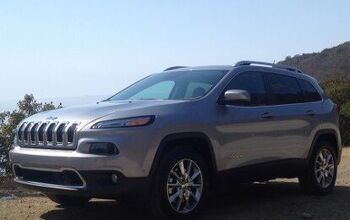Jeepers: Toledo South to Temporarily Halt Gladiator Production

The chips are down in Ohio, with semiconductor shortage reaching the factory floor where Jeep builds its Gladiator truck. According to reports, the Stellantis plant responsible for assembly of the lantern-jawed pickup, Toledo South, will halt the models’ production next week.
Wrangler production is not affected. For now.
“Stellantis continues to work closely with our suppliers to mitigate the manufacturing impacts caused by the various supply chain issues facing our industry,” a Stellantis spokesperson said in a statement to local media.
Beyond all the marketing doublespeak, it sounds like the company is allocating what chips it has on hand to vehicles that are in the most demand or making bank in terms of profit. While no one will suggest the Gladiator is an unprofitable vehicle, it does sell at a slower pace than the Wrangler. Given a choice, Jeep is wise to leave production of the latter uninterrupted. There are marked differences between the two machines but there are also vast similarities, leading us to rightly assume some parts (like certain semiconductors) can be transferred from one assembly line to the other in a bid to keep the place humming.
Jeep is hardly in this boat by itself, with most of the industry coping with the chip shortage in one way or another. Images of bare and barren dealer lots are easy to find online, with inventory problems becoming the bane of sales staff across the nation. Ford has even floated the idea of shipping unfinished trucks to dealers and having the chips installed by their techs; this is presumably in an effort to populate lots with something other than sailboat fuel. For the record, your author thinks this is a terrible idea – techs are already overworked, dealers may be tempted to let unfinished trucks slip out the door (especially if they’re floorplanning the things), and customers might scream bloody murder if they can’t have that truck out there right now.
Meanwhile, Stellantis CEO Carlos Tavares last week told the media his company expects the chip shortage to easily stretch into the 2022 calendar year. Demand created from the pandemic has led to a tight supply of things, a situation expected to cost the industry billions of dollars this year alone.
[Image: Jeep]

Matthew buys, sells, fixes, & races cars. As a human index of auto & auction knowledge, he is fond of making money and offering loud opinions.
More by Matthew Guy
Latest Car Reviews
Read moreLatest Product Reviews
Read moreRecent Comments
- Kjhkjlhkjhkljh kljhjkhjklhkjh A prelude is a bad idea. There is already Acura with all the weird sport trims. This will not make back it's R&D money.
- Analoggrotto I don't see a red car here, how blazing stupid are you people?
- Redapple2 Love the wheels
- Redapple2 Good luck to them. They used to make great cars. 510. 240Z, Sentra SE-R. Maxima. Frontier.
- Joe65688619 Under Ghosn they went through the same short-term bottom-line thinking that GM did in the 80s/90s, and they have not recovered say, to their heyday in the 50s and 60s in terms of market share and innovation. Poor design decisions (a CVT in their front-wheel drive "4-Door Sports Car", model overlap in a poorly performing segment (they never needed the Altima AND the Maxima...what they needed was one vehicle with different drivetrain, including hybrid, to compete with the Accord/Camry, and decontenting their vehicles: My 2012 QX56 (I know, not a Nissan, but the same holds for the Armada) had power rear windows in the cargo area that could vent, a glass hatch on the back door that could be opened separate from the whole liftgate (in such a tall vehicle, kinda essential if you have it in a garage and want to load the trunk without having to open the garage door to make room for the lift gate), a nice driver's side folding armrest, and a few other quality-of-life details absent from my 2018 QX80. In a competitive market this attention to detai is can be the differentiator that sell cars. Now they are caught in the middle of the market, competing more with Hyundai and Kia and selling discounted vehicles near the same price points, but losing money on them. They invested also invested a lot in niche platforms. The Leaf was one of the first full EVs, but never really evolved. They misjudged the market - luxury EVs are selling, small budget models not so much. Variable compression engines offering little in terms of real-world power or tech, let a lot of complexity that is leading to higher failure rates. Aside from the Z and GT-R (low volume models), not much forced induction (whether your a fan or not, look at what Honda did with the CR-V and Acura RDX - same chassis, slap a turbo on it, make it nicer inside, and now you can sell it as a semi-premium brand with higher markup). That said, I do believe they retain the technical and engineering capability to do far better. About time management realized they need to make smarter investments and understand their markets better.


































Comments
Join the conversation
Side note I saw my first working Gladiator the other day. Bed loaded with a pallet on vinyl windows in front of house getting resided. Saw it again later in the week with a load of trim on a ladder rack. Nice to see.
Yeah, I can’t see “chips” going in anyplace; it’s going to be modules. I certainly hope that SRS modules are finished at the factory! I don’t think I’d want to be the one to be the first to power those up on a daily basis! At least at the factory, the line worker applying battery power to a vehicle for the first time is at least outside the car, instead of in the vehicle with aforementioned claymores!